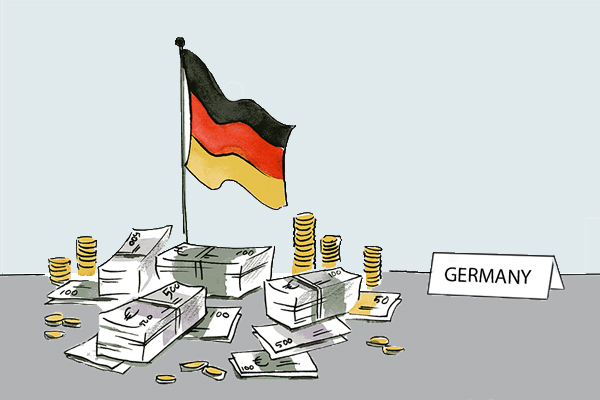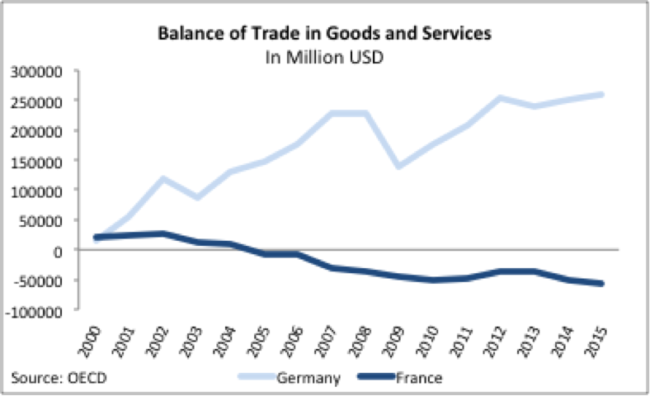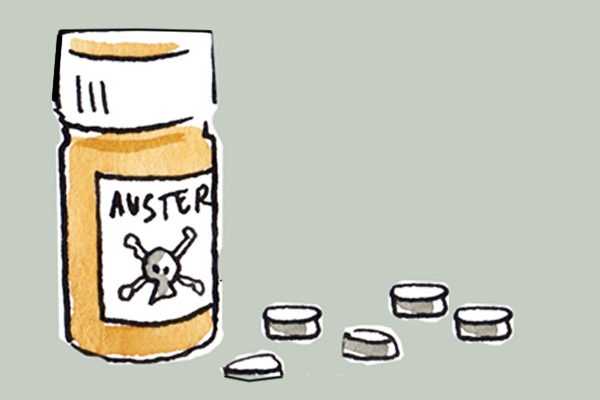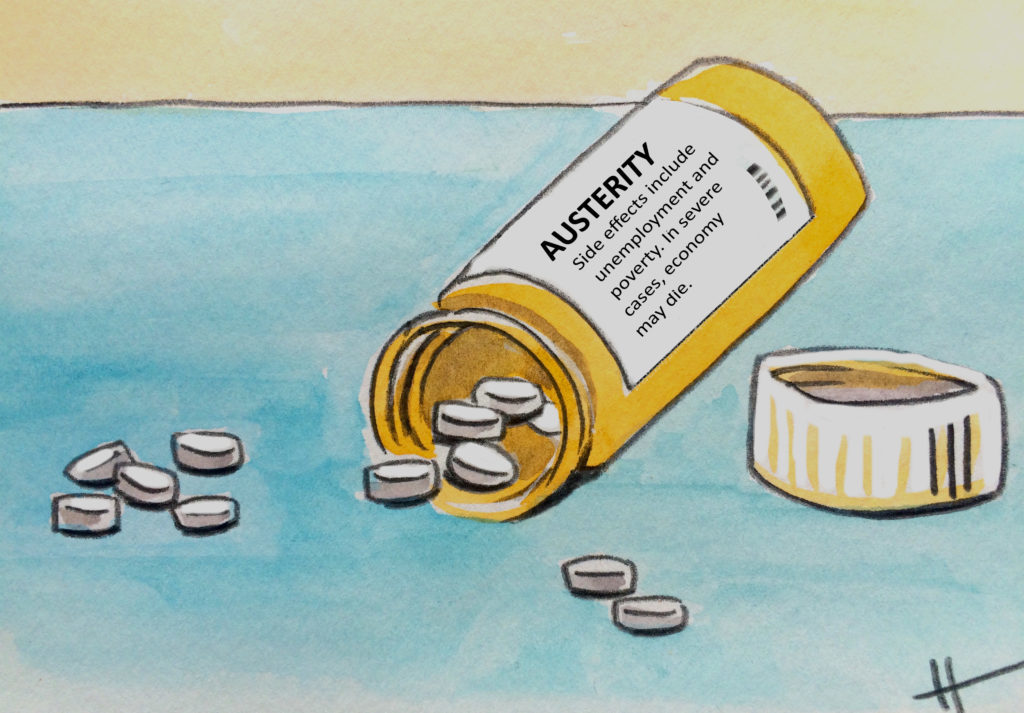By Elham Saeidinezhad | In recent history, one of a few constants about the European Union (EU) is that it follows the U.S. footstep after any disaster. After the COVID-19 crisis, the Fed expanded the scope and duration of the Municipal Liquidity Facility (MLF) to ease the fiscal conditions of the states and the cities. The facility enables lending to states and municipalities to help manage cash flow stresses caused by the coronavirus pandemic. In a similar move, the ECB expanded its support for the virus-hit EU economies in response to the coronavirus pandemic. Initiatives such as Pandemic Emergency Purchase Programme (PEPP) allow the ECB to open the door to buy Greek sovereign bonds for the first time since the country’s sovereign debt crisis by announcing a waiver for its debt.
There the similarity ends. While the market sentiment about the Fed’s support program for municipals is very positive, a few caveats in the ECB’s program have made the Union vulnerable to a market run. Fitch has just cut Italy’s credit rating to just above junk. The problem is that unlike the U.S., the European Union is only a monetary union, and it does not have a fiscal union. The investors’ prevailing view is that the ECB is not doing enough to support governments of southern Europe, such as Spain, Italy, and Greece, who are hardest hit by the virus. Anxieties about the Union’s fiscal stability are behind repeated calls for the European Union to issue common eurozone bonds or “corona bond.” Yet, the political case, especially from Northern European countries, is firmly against such plans. Further, despite the extreme financial needs of the Southern countries, the ECB is reluctant to lift its self-imposed limits not to buy more than a third of the eligible sovereign bonds of any single country and to purchase sovereign bonds in proportion to the weight of each country’s investment in its capital. This unwillingness is also a political choice rather than an economic necessity.
It is in that context that this piece proposes the ECB to include the Eurozone government bond ETF to its asset purchasing program. Purchasing government debts via the medium of the ETFs can provide the key to the thorny dilemma that is shaking the foundation of the European Union. It can also be the right step towards creating a borrowing system that would allow poorer EU nations to take out cheap loans with the more affluent members guaranteeing the funds would be returned. The unity of EU members faces a new, painful test with the coronavirus crisis. This is why the Italian Prime Minister Guiseppe Conte warned that if the bloc fails to stand up to it, the entire project might “lose its foundations.” The ECB’s decision to purchase Eurozone sovereign debt ETFs would provide an equal opportunity for all the EU countries to meet the COVID-19 excessive financial requirements at an acceptable price. Further, compared to the corona bond, it is less politically incorrect and more common amongst the central bankers, including those at the Fed and the Bank of Japan.
In the index fund ecosystem, the ETFs are more liquid and easier to trade than the basket of underlying bonds. What lies behind this “liquidity transformation” is the different equilibrium structure and the efficiency properties in markets for these two asset classes. In other words, the dealers make markets for these assets under various market conditions. In the market for sovereign bonds, the debt that is issued by governments, especially countries with lower credit ratings, do not trade very much. So, the dealers expect to establish long positions in these bonds. Such positions expose them to the counterparty risk and the high cost of holding inventories. Higher price risk and funding costs are correlated with an increase in spreads for dealers. Higher bid-ask spreads, in turn, makes trading of sovereign debt securities, especially those issued by countries such as Italy, Spain, Portugal, and Greece, more expensive and less attractive.
On the contrary, the ETFs, including the Eurozone government bond ETFs, are considerably more tradable than the underlying bonds for at least two reasons. First, the ETF functions as the “price discovery” vehicle because this is where investors choose to transact. The economists call the ETF a price discovery vehicle since it reveals the prices that best match the buyers with the sellers. At these prices, the buying and selling quantities are just in balance, and the dealers’ profitability is maximized. According to Treynor Model, these “market prices” are the closest thing to the “fundamental value” as they balance the supply and demand. Such an equilibrium structure has implications for the dealers. The make markers in the ETFs are more likely to have a “matched book,” which means that their liabilities are the same as their assets and are hedged against the price risk. The instruments that are traded under such efficiency properties, including the ETFs, enjoy a high level of market liquidity.
Second, traders, such as asset managers, who want to sell the ETF, would not need to be worried about the underlying illiquid bonds. Long before investors require to acquire these bonds, the sponsor of the ETF, known as “authorized participants” will be buying the securities that the ETF wants to hold. Traditionally, authorized participants are large banks. They earn bid-ask spreads by providing market liquidity for these underlying securities in the secondary market or service fees collected from clients yearning to execute primary trades. Providing this service is not risk-free. Mehrling makes clear that the problem is that supporting markets in this way requires the ability to expand banks’ balance sheets on both sides, buying the unwanted assets and funding that purchase with borrowed money. The strength of banks to do that on their account is now severely limited. Despite such balance sheet constraints, by acting as “dealers of near last resort,” banks provide an additional line of defense in the risk management system of the asset managers. Banks make it less likely for the investors to end up purchasing the illiquid underlying assets.
That the alchemists have created another accident in waiting has been a fear of bond market mavens and regulators for several years. Yet, in the era of COVID-19, the alchemy of the ETF liquidity could dampen the crisis in making by boosting virus-hit countries’ financial capacity. Rising debt across Europe due to the COVID-19 crisis could imperil the sustainability of public finances. This makes Treasury bonds issued by countries such as Greece, Spain, Portugal, and Italy less tradable. Such uncertainty would increase the funding costs of external bond issuance by sovereigns. The ECB’s attempt to purchase Eurozone government bonds ETFs could partially resolve such funding problems during the crisis. Further, such operations are less risky than buying the underlying assets.
Some might argue the ETFs create an illusion of liquidity and expose the affluent members of the ECB to an unacceptably high level of defaults by the weakest members. Yet, at least two “real” elements, namely the price discovery process and the existence of authorized participants who act as the dealers of the near last resort, allows the ETFs to conduct liquidity transformation and become less risky than the underlying bonds. Passive investing sometimes is called as “worse than Marxism.” The argument is that at least communists tried to allocate resources efficiently, while index funds just blindly invest according to an arbitrary benchmark’s formula. Yet, devouring capitalism might be the most efficient way for the ECB to circumvent political obstacles and save European capitalism from itself.
Elham Saeidinezhad is lecturer in Economics at UCLA. Before joining the Economics Department at UCLA, she was a research economist in International Finance and Macroeconomics research group at Milken Institute, Santa Monica, where she investigated the post-crisis structural changes in the capital market as a result of macroprudential regulations. Before that, she was a postdoctoral fellow at INET, working closely with Prof. Perry Mehrling and studying his “Money View”. Elham obtained her Ph.D. from the University of Sheffield, UK, in empirical Macroeconomics in 2013. You may contact Elham via the Young Scholars Directory






